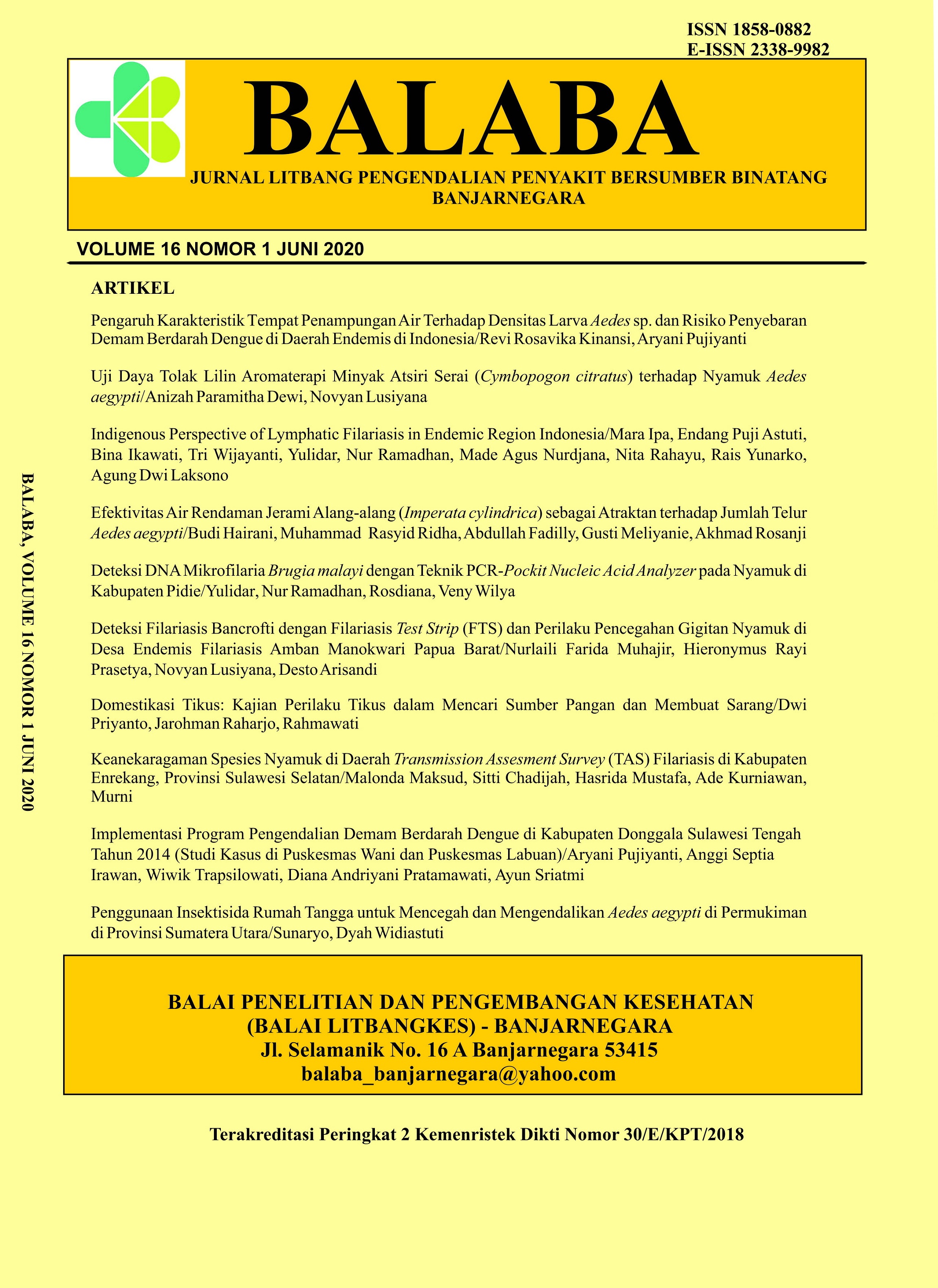DNA Microfilaria detection of Brugia malayi with PCR Technique-Pockit Nucleic Acid Analyzer on Mosquitoes in Pidie District
Keywords:
Kambuk Payapi, Brugia malayi DNA, Aedes vexansAbstract
Filariasis is a vector-borne disease and still a public health problem in Pidie District. Transmission of filariasis infection to humans occurs through the bite of a mosquito vector carrying infective larval stage filaria (L3). This cross-sectional study conducted from February to November 2017 in Pidie district (Kambuk Payapi and Kambuk Nincah Village). Mosquitoes collection carried out during 2 periods with modified human landing collection methods. The third instar larvae infective DNA by PCR Technique-Pockit Nucleic Acid Analyzer. The results showed that the number of mosquitoes caught was 2,309 which consists of 7 genus of Culex sp., Aedes sp., Anopheles sp., Armigeres sp., Mansonia sp., Uranotaemia sp., and Verallina sp. The dominant mosquito of the Culex genus collected from the filed was Culex sitiens. The results of PCR analysis of DNA found that positive third instar larvae of Brugia malayi infective in Cx. sitiens, Cx. quiquefasciatus, Aedes vexans and Mansonia indiana. Transmission of filariasis infection in Pidie community with the discovery of the source of infection in the mosquito's body.


